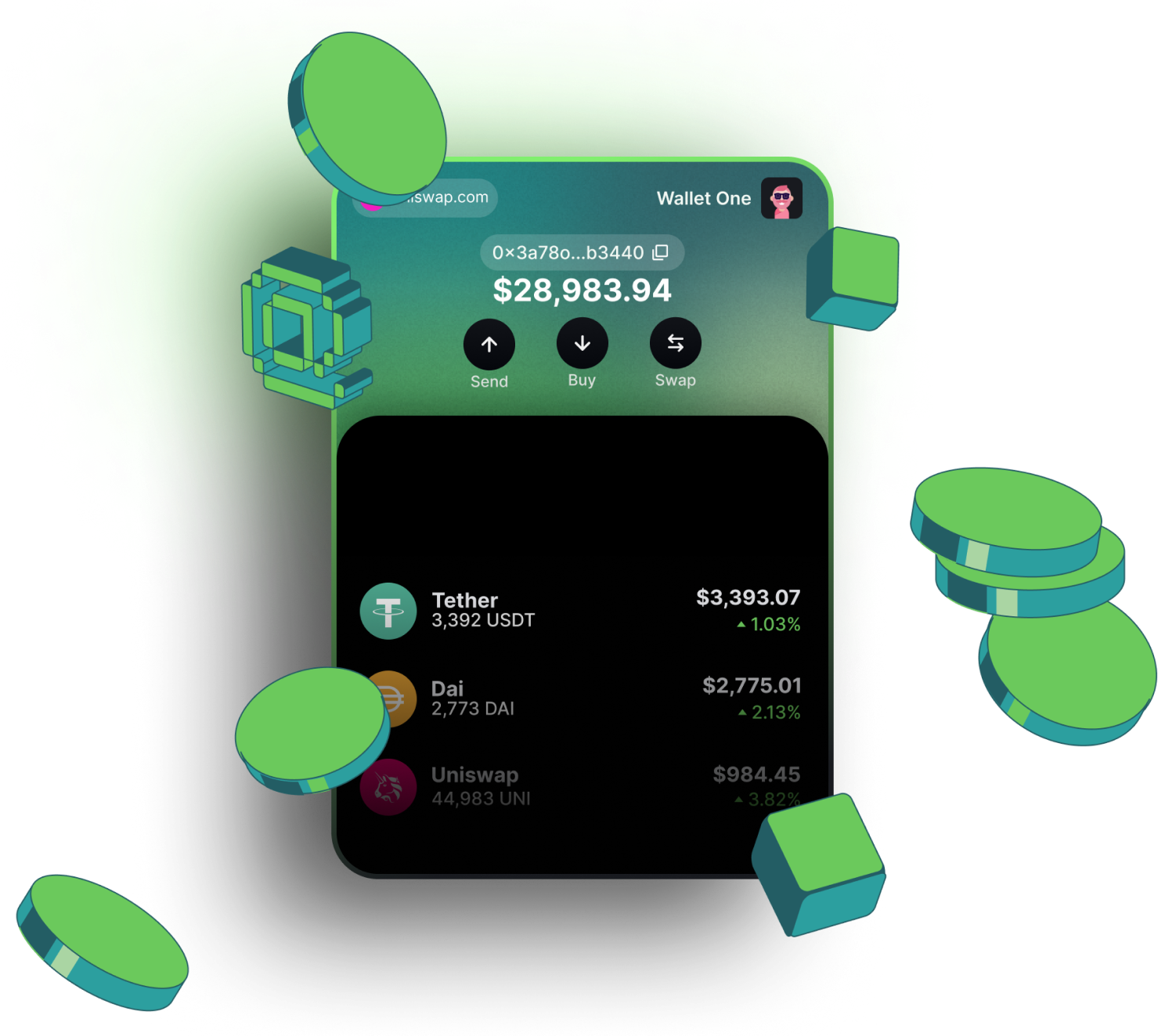Wigwam is the best  Blast blockchain crypto wallet
Blast blockchain crypto wallet
Download Extension
Why choose the Wigwam crypto app?
Work with Blast Testnets and Mainet
Buy Blast tokens, including native token, by using a credit card
Swap Blast-based tokens directly in the wallet
Possibility to connect the wallet to all Blast Blockchain dAps: DeFi, DAO, Gamings, etc
How to get a Blast address in Wigwam web wallet
Create a wallet in Wigwam
Choose a Blast network from the dropdown menu
Copy you Blast address
Blast Blockchain review
Blast Blockchain is a cutting-edge layer-2 scaling solution designed to enhance the scalability and yield capabilities of the Ethereum network. It aims to address the limitations of traditional blockchain technology by introducing innovative solutions to improve transaction speed, reduce costs, and increase the overall efficiency of the network.
History and Origin
Blast Blockchain, conceived by Blur's founder Tieshun Roquerre, launched in November 2023 as a layer-2 scaling solution for Ethereum. It aimed to address Ethereum's scalability issues while offering native yield, a unique feature in layer-2 solutions. Within hours of its launch, Blast attracted over $30 million in bridged assets. Led by Roquerre, also known as PacmanBlur, Blast aimed to integrate with Blur's NFT marketplace, providing users with yield opportunities and enhancing DeFi adoption.
Key Milestones
Launch of Blast Blockchain: First appeared in the beginning of 2023, Blast was already widely known in the crypto community by the time thanks to its innovative way of layer-2 scaling.
Partnerships and Funding: In exchange for their helping hand, Blast had some high-profile investors notably Paradigm and Standard Crypto who were able to finance its development and expansion.
Introduction of Auto-Rebasing Mechanism: Among many achievements it is worth mentioning introducing a native token called Blast with auto-rebasing feature and a stable coin called USDB, that auto-rebases as well. This is the feature that does in a second automatic circulation of the token's supply along with the market and this is a unique enough option for users to progress their yield.
Big Bang Competition: In May 2024 Blast joined the hype with Big Bang Competition, a program in which developers get the chance to start building their products on Blast’s platform. This competition does not only present opportunities and profit as the winner but also recognizes participants by giving them guidance and welfare.
Technical Overview
Blast benefits from the layer-2 scalability solutions of Ethereum to offer effective and multi-faceted efficiency. It achieves this by presenting a unique proposal, where native tokens get auto-rebasing as well as a protocol that links it to real assets through the T-Bill protocol made by MakerDAO. Through this, Blast affords its token holders a unique yield potential, which allows them to mint the new token ETH and stablecoins, which is a first in the DeFi space.
What Consensus Algorithm Does Blast Use?
As Blast consensus-specific details are not given in the listed sources, Blast uses its consensus algorithm which comes with those principles including decentralization and security which are vital for the blockchain platform. One of the key points that might be emphasized is the use of a consensus algorithm similar to Ethereum's where PoS (Proof-of-Stake) or DPoS (Delegated Proof-of-Stake) is likely to be employed given their reputation for offering high throughput and scalability.
How Blast Technically Solved Problems with Scalability, Decentralization, and Speed?
Blast holds magnificent Blast solutions in the area of Ethereum scalability, decentralization, and speed through its layer-2 scalability solution. Blast takes advantage of Ethereum's network and smart contract technology to adapt auto-rebasing functions and guarantees the fast delivery of transactions without draconian costs. It emphasizes the high quality of the user interface and creates a space which can expand unlimitedly.
Who are the Main Players in the Blast?
The major stakeholders in the Blast system consist of the project owners/developers, investors, the contesters of the Big Bang Competition, offspring, and the community token holders and users. The project's success is largely driven by the community's engagement and the strategic backing it has received from major investors.
DeFi Ecosystem on Blast
The Blast Defi ecosystem is vibrant and growing and nowadays one can have a wide range of services. Staking is facilitated by auto-rebasing mechanisms, the introduction of which contributed to greater developers’ and users’ engagement, which in turn resulted in such a vigorous and interesting ecosystem. The most popular Blast DeFi projects you may find on their website.
Tokenomics and Gas Usage on Blast
Blast uses its Blast token and a residing stablecoin concept, USDB, that triggered an auto-rebasing mechanism on the tokenomics model. The feature of automatic rebasing allows token holders to receive profits from the supply dynamism via this income-generating mechanism. This function is created with unique mechanisms offering unique yield opportunities. The gas utilization on the Blast is intended to be consumed efficiently, as the network relies on the ideas of scalability and cost-effectiveness as its key defining elements.
Conclusion
Through its breakthrough of Blast Blockchain technology, the biggest problems of blockchain development have been resolved – scalability, decentralization, and speed. The very peculiar aspects are what make it one of the most up-to-date cryptocurrencies in the DeFi space. The obvious examples include modified rebasing mechanisms, stake-based voting as well as the concept of the Big Bang Competition. During the project and as it starts to attract more funding, this is further entrenched and it will probably be a main player in the future of blockchain technology.





